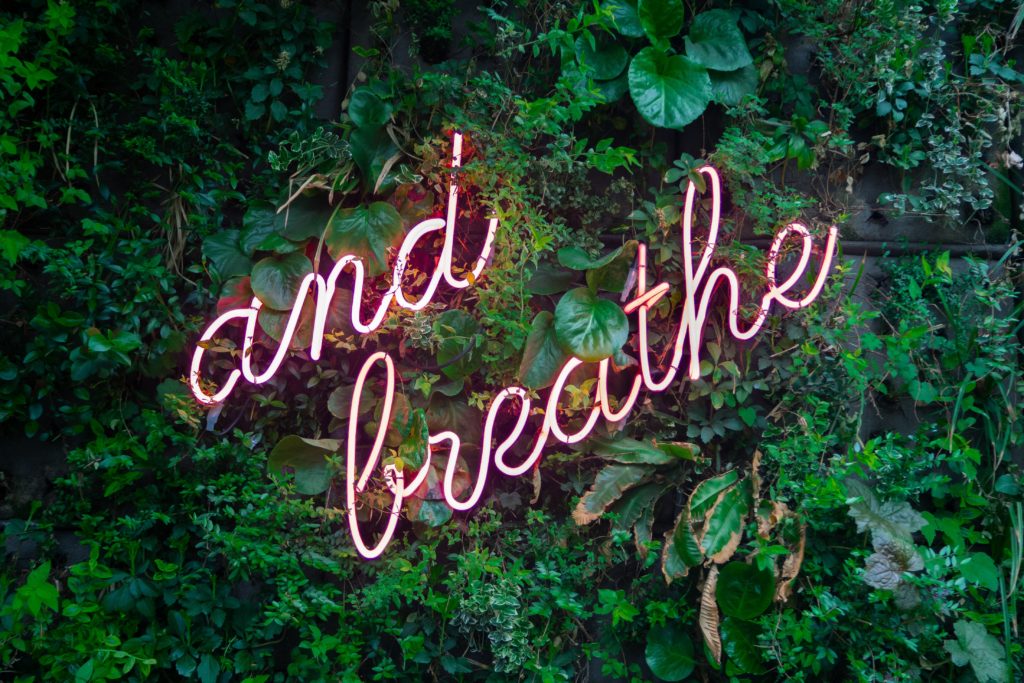Respiratory physiology is absolutely fascinating to me. So fascinating, in fact, that I have put together a little breathwork resource. I’ll tell you how you can get your hands on it at the end of this post This guide will allow you to take a few tentative initial steps into breathwork.
Just pause for a moment, take a deep breath in through your nose, then out through your mouth, releasing all tension in your body as you do so, and as you do so, dwell upon the complex and wonderful science of that single breath.
That breath you just took began with your nose. Your nasal passages are quite similar to a high-tech air conditioning and purifying system. They filter out large dust particles and microbial spores via the mucous membrane that line your nasal cavity where sticky mucus is secreted to trap and dispose of impurities. The nasal passages warm and humidify the air you breathe, primarily by the means of a rich blood supply below the mucous membrane. This blood acts as a kind of chemical cleanser of the air you breathe. Despite a microsecond contact time with the nasal mucosa, your inspired air is cleared of ozone, sulphur dioxide, and other water-soluble pollutant gases (far better than it is cleared by breathing through your mouth, in fact).
Nitric oxide, or NO, is a very important substance produced in large quantities in the nasal sinuses. When you inhale through your nose, NO accompanies the inhaled air in order to dilate the bronchial tubes to allow the air to pass through easily. NO also has antimicrobial properties that can kill viruses and bacteria that have escaped from the cilia inside your nose and throat (interestingly, including corona virus). NO also causes the blood vessels inside your lungs to dilate, which allows oxygen to be transferred to your blood more easily. (This phenomenon also does not occur when you breathe through your mouth.)
After being warmed and cleaned, the air passes into your windpipe (trachea) and from there it diverts into two large branches—the main bronchi (where continue the cleaning process via removal of finer particles), followed by progressive branching into increasingly smaller bronchi called bronchioli. The mucous membrane lining these bronchi also contains cells with cilia, tiny whip-like hairs that beat directionally to move a layer of mucus upwards toward your throat, where the mucus and the particles it has entrapped can be swallowed.
Each bronchiolus terminates in a tiny air sac called an alveolus, which contain enzymes to dissolve mucus, thus keeping the alveoli from getting “plugged up” by mucus, along with a soapy substance called surfactant, which keeps the moist alveoli from collapsing due to surface tension. Within the walls of each these 800 million-ish alveolus in your lungs are tiny blood vessels, or capillaries, with incredibly thin walls tightly packed with these capillaries where gas exchange can take place. Used, deoxygenated blood coming into your lungs from the veins via the heart contains a surplus of carbon dioxide, which is then exchanged for oxygen through the alveoli. The prepared, oxygenated blood is then returned to your heart for circulation to the rest of your body—where the oxygen drives the metabolic reactions that give your cells life. This entire sequence only takes approximately 1.5 seconds, and during that process, your heart is spreading 8 tons of blood over a lung area of half the size of a tennis court, then shunting it back into circulation…about 100,000 times a day.
This incredible respiratory system I’ve just described has such an abundance of functional reserve built into it that studies have shown people can lose nearly ¾ of their lung tissue before serious respiratory difficulty develops! It is a staggeringly elegant system, showing every sign of being a complex, intelligently designed loop that allows you to maintain energy and life via something as seemingly simple as breathing.
But breathing goes far beyond a mere exchange of oxygen and carbon dioxide.
For example, in the fascinating book ‘Breathing as Spiritual Practice’ – https://bit.ly/35cdMbY – author Will Johnson describes how Western spiritual traditions, such as the Book of Genesis, the Jewish teachings of Ruach, and the poetry of Rumi, all contain “hidden” instruction for meditative breathing practices.

Here are such examples…
Breathwork is crucial for full mindfulness and presence.
It’s absolutely mind-boggling the extreme clarity that one simple, focused breath can give you—and earth-shattering what can occur in your brain with 5, 10, 20, 30, or even 60 minutes of breathwork. But start small. Any time you desire to be more present and mindful—whether you are playing with a child, sitting in traffic, firing through e-mails, preparing for a workout, getting ready to eat a meal, or reading a meaningful text—simply try one to three mindful breaths.
The basic technique for mindful breathing is to focus your attention on your breath (the inhale and exhale) with openness and childlike curiosity. As you inhale (preferably through the nose) and exhale (preferably through slightly pursed lips), even if it is just for sixty seconds, you should:
Notice how your body feels when breathing.
Bring your awareness to any part of your body that feels tense, then contract and subsequently relax those muscles.
Next, bring your awareness back to your breath.
Notice where you feel the breath most in your body.
Settle into relaxation as you follow the sensation of each inhale and exhale.
If your mind wanders, simply acknowledge the sensations, thoughts or feelings that arise with open curiosity, like wispy clouds passing from one ear across to the other ear, and then let them go.
Continue to gently direct your attention back to your breath for as long you’d like.
I suspect that the reason this type of “pause” allows you to be present and mindful is that the relaxed breathing activates your restful parasympathetic nervous system, shifting you from a state of hyperalertness, scanning for danger, and somewhat shallow focus to a more blissful state of depth and awareness towards whichever activity you are engaged in. Of course, this tactic can be used in reverse also: You can do one to three minutes of rapid “hyperventilation” breathing to psyche you up for a workout, wake you up in the morning, or prepare your for a competition. Breath is in fact the best free method you own to shift your nervous system in any direction you desire. Learn that skill, and your life will be better for it.
Your breathwork can optimise your sleep.
While there is a multitude of forms of relaxing breathwork to prepare for sleep, two of my favourite forms of nighttime breathing are a “double-inhale-to-exhale” and a “4-7-8” pattern. For the former, neuroscientist, Dr. Andrew Huberman claims that breaking up one long inhale as a double inhale through your nose and then exhaling through your mouth can calm you instantly. It definitely seems to work. In addition, Dr. Andrew Weil describes how he favours the 4-7-8 protocol, and this pattern of a “4 count in-7 count hold-8 count out” also seems to work quite well, probably because, based on a concept called “cardiac coherence,” a long, relaxed exhale activates the parasympathetic nervous system, slows the heart rate, and increases the heart rate variability—a sign of overall nervous system resilience and a de-stressed state.
The opposite also holds true. Hastily sucking your breath in with shallow chest breathing and rapid exhales is not only a fast track to activating of your fight-and-flight sympathetic nervous system.
Let everything that has breath be grateful. I am a miracle, you are miracle, and our bodies – including our respiratory systems – are absolutely miraculous feats of evolution. You should be in awe and thankful for the magical complexity of breath every day.
I recommend you be grateful when you engage in a daily mindful breathing habit, even if just for one minute. Eventually, this emotion of gratitude will subconsciously become woven into every breath you take.
Summary
Ultimately, I believe that an intimate connection to your own breath is one of the best gifts you can give to yourself, your loved one, or your children.
Finally, if you want to take your first steps into all things breath, I have produced a Beginners Guide to Breath Work to get you on your way to become a true breath “ninja.”
If you would like a copy, comment below with ‘Breathe’ 👇
Yours optimally,
Scott
PS. Just leave a ‘Breathe’ below and I’ll get that guide over to you 👇
Source: A lot of the content from this post, though my genuine experience, came from a post by Ben Greenfield

